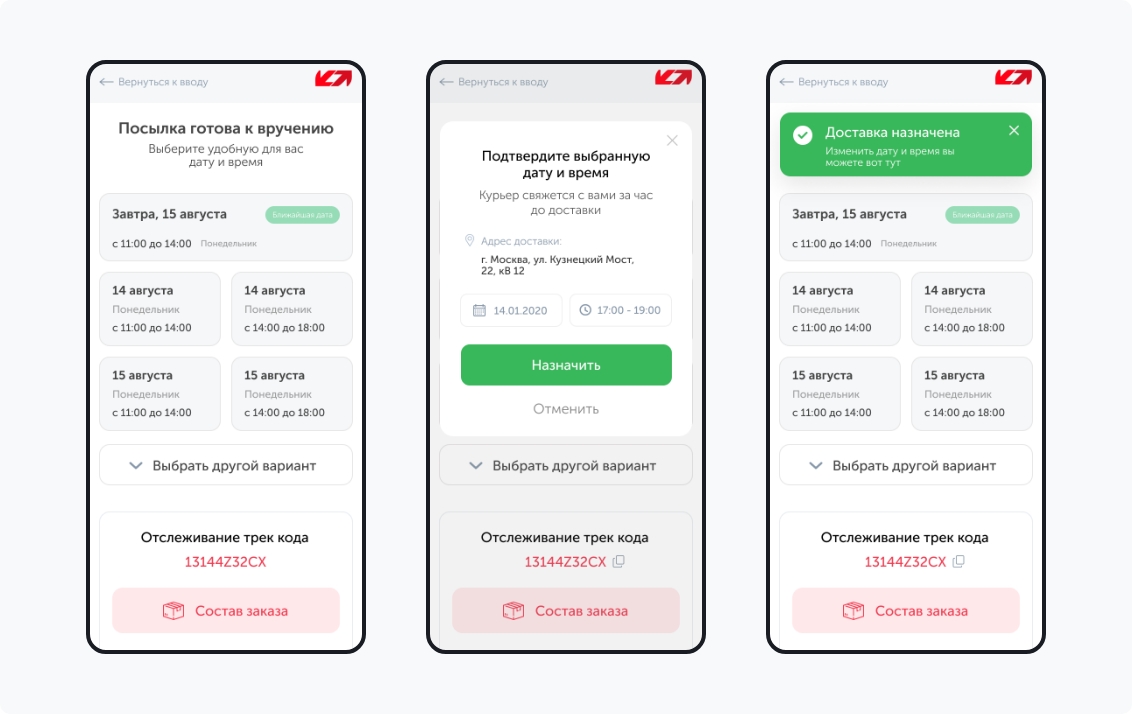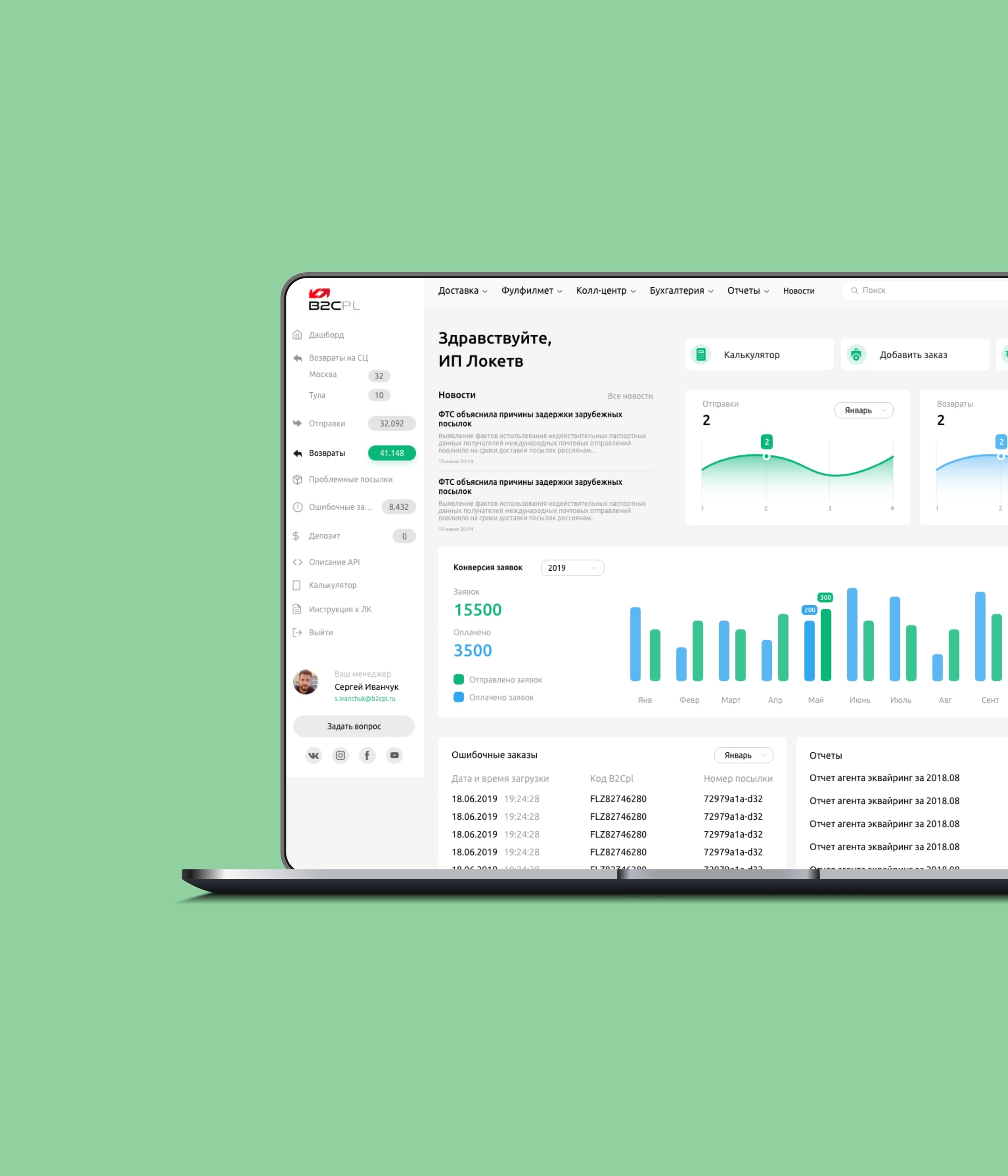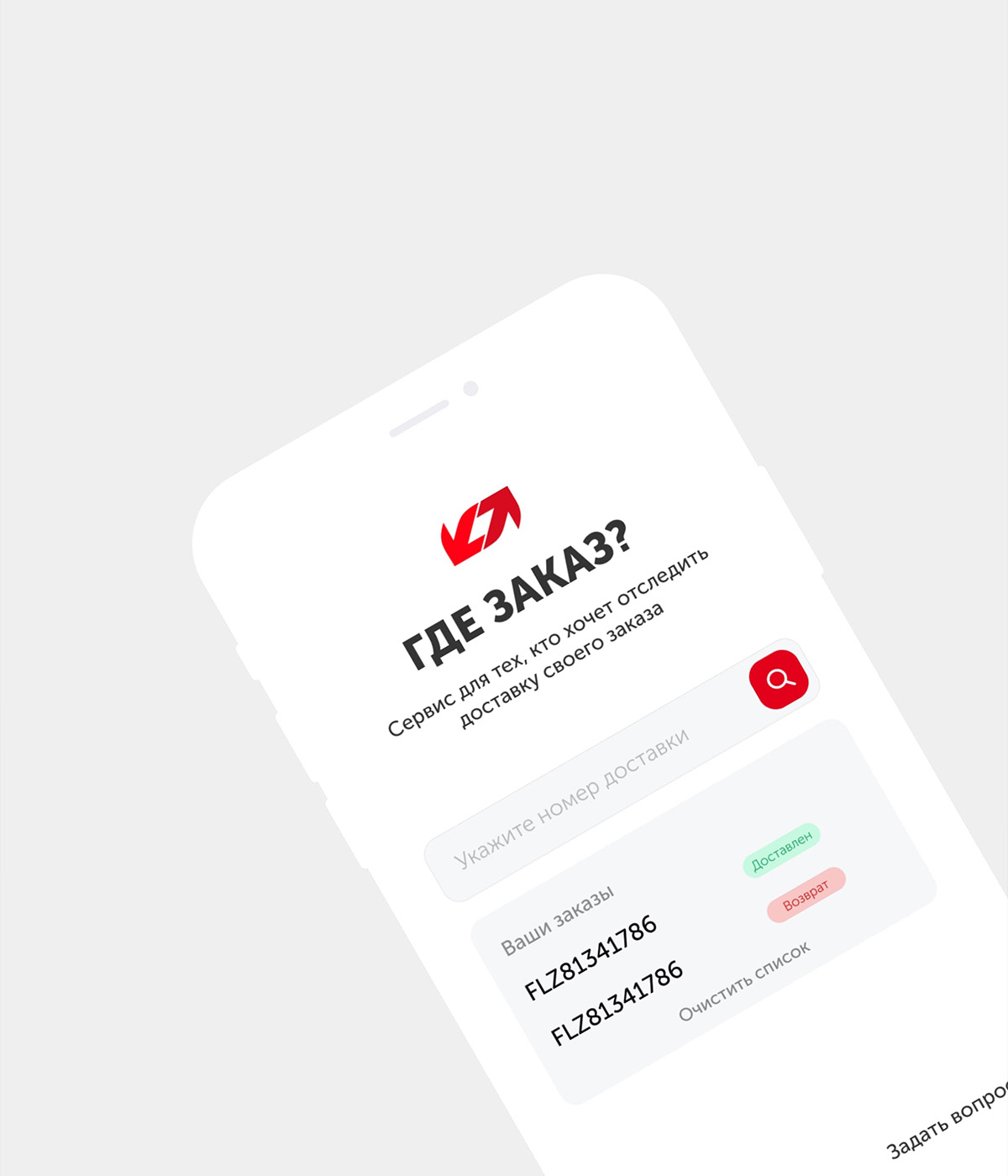UX analytics for a logistics company B2CPL
task
Find out what problems users face when making delivery appointments in the tracker. What affects conversion rates and what factors lead to rejection
client
B2CPL provides its customers with comprehensive e-commerce solutions for courier delivery and logistics
link
Metrics analysis
Reviewed and analysed metrics systems in order to collect data on the audience of the interface, and to assess its usability.
Questionnaire
Reviewed and analysed metrics systems to collect data on the audience of the interface, and to assess its usability.
CJM
We created a Customer Journey Map to graphically depict the interaction between the CA representative and the tracker: identifying contact points, goals and product expectations; emotions, positive experiences and barriers/pain points that may arise.
UX test
Conducted a series of UX tests to observe the objective behaviour of users in the date and time delivery tracker.
In-depth interviews
Conducted in order to collect more detailed data on the characteristics of user experience related to interactions with delivery destination trackers and courier services in general.
Expert analysis
Conducted with a UX researcher and UX designer, drawing on expertise and usability standards to identify key interface issues.
carried out a demographic analysis of the tracker's audience in order to segment it by age/gender
analysed which regions get the most traffic and which have the highest bounce rates
identified which days of the week are usually the busiest for the service
carried out a link and click map analysis
carried out web survey analysis, dividing visitors into 3 segments: achieved «Delivery appointment» goal; failed to achieve «Delivery appointment» goal; visits where date and time interval were previously agreed
analysed which browsers have the highest bounce rate

At the initial stage, respondents were given a series of screening questions to validate the user experience and to be sure of their relevance.
As a result of the tests, some difficulties were found, for which further solutions were proposed.
Thanks to this step, we found out:
which stage of the UX test task seemed the most difficult to respondents
which elements of the interface they think are problematic
what experience respondents have with courier services
how respondents feel about self-designated delivery
whether they have had previous experience of changing the date and time of delivery
which sections of the trackers are key to them and what they look for first when accessing such services
For the majority of respondents there were poor * * * * * * * * * *
The majority of respondents highlighted the fact that * * * * * * * * * *
The main key sections when tracing * * * * * * * * * *

B2CPL represented by development director Matvey Kozlovsky would like to thank Oktta. In the period from February 2020 to September 2021 a set of works on the redesign of personal account, tracking service and a comprehensive UX study was carried out. We would like to confirm that all the works were completed within the deadline specified in the contract, in full and with good quality. Also we would like to note the positive aspects of cooperation: Extensive involvement of Oktta employees in the development process, a wide analytical arsenal of the team, willingness to continue to work to achieve the required result, despite the number of intermediate iterations, operational work - both in development stages, and in communication and feedback. With this in mind, we recommend Oktta to other organisations and would gladly continue our cooperation.
Matvey Kozlovsky, Development Director, B2CPL

